- The Jungle Favorites
- 1. Monstera Deliciosa
- 2. Philodendron
- 3. Ferns
- 4. Pothos
- Unusual Succulents and Cacti
- 1. Lithops
- 2. Echeveria ‘Black Prince’
- 3. Rhipsalis
- 4. Haworthia cooperi
- 5. Euphorbia obesa
- 6. Gymnocalycium mihanovichii ‘Hibotan’
- A Guide to Ferns and Mosses
- Ferns
- Mosses
- Tropical Flowering Plants
- 1. Orchids
- 2. Anthuriums
- 3. Bird of Paradise
- 4. Bromeliads
- 5. Plumeria
- The Beauty of Orchids
- Popular Orchid Varieties
- Taking Care of Orchids
- The Elegance of Orchids
- The Fascinating World of Bonsai
- History of Bonsai
- Types of Bonsai
- Care and Maintenance
- The Art of Bonsai Today
- Herbs for Indoor Gardening
- 1. Basil
- 2. Mint
- 3. Rosemary
- 4. Parsley
- 5. Thyme
- Exploring the Unique Air Plants
- Introduction
- Characteristics
- Care Tips
- Displaying Air Plants
- In conclusion
- Q&A:
- What are some popular indoor plants that require low light?
- Can you suggest some flowering indoor plants?
- What are some indoor plants that are safe for pets?
- Are there any indoor plants that can improve indoor air quality?
- What are some trailing indoor plants that are good for hanging baskets?
- Are there any indoor plants that are suitable for beginners?
- Video: Lots of Foundation Plants for Corners – Part 3
Welcome to the third installment of our series on the most popular indoor plant groups! In this article, we will continue exploring different types of houseplants that are beloved by both novices and experienced plant enthusiasts. Whether you are looking to add some greenery to your home or improve the air quality, there is sure to be a plant from one of these groups that will fit your needs.
In this part, we will be taking a closer look at two more popular indoor plant groups: ferns and succulents. Ferns are renowned for their graceful fronds and ability to thrive in low light conditions, making them a great choice for adding a touch of elegance to any room. Succulents, on the other hand, are known for their unique shapes and ability to store water in their leaves, allowing them to withstand periods of drought. These plants are not only visually striking but also relatively easy to care for, making them a favorite among many plant enthusiasts.
As with the previous articles in this series, we will provide tips on how to care for each group of plants, including the ideal watering and lighting conditions, as well as any specific needs or considerations. Whether you are a beginner or have a green thumb, these articles will provide you with the information you need to successfully grow and appreciate these beautiful plants.
So, if you are ready to explore the world of indoor plants further, join us as we delve into the captivating world of ferns and succulents. These plants not only add a touch of green to your home but also offer numerous benefits, such as improved air quality and a calming effect on the mind. Let’s get started on this exciting journey of discovering new plant groups and expanding our knowledge of indoor gardening.
The Jungle Favorites
The Jungle Favorites are a group of indoor plants that thrive in high humidity and low light conditions. These plants are perfect for adding a touch of lush greenery to any room in your home. Let’s take a look at some of the most popular Jungle Favorites:
1. Monstera Deliciosa
The Monstera Deliciosa, also known as the Swiss Cheese Plant, is a tropical plant with large, glossy leaves that have distinctive holes. It is a popular choice for its unique appearance and ability to grow in low light conditions. The Monstera is known for its fast growth and can quickly fill up a space with its beautiful foliage.
2. Philodendron
There are many different varieties of Philodendrons, all of which are popular indoor plants. They are known for their heart-shaped leaves and can thrive in a variety of light conditions. Philodendrons are relatively low-maintenance plants and can add a touch of elegance to any room.
3. Ferns
Ferns are a classic choice for indoor plants, especially in humid environments. They have delicate, feathery leaves that provide a soft and natural look. Ferns thrive in indirect light and require regular watering to maintain their vibrant green color.
4. Pothos
Pothos plants are easy to care for and are perfect for beginners. They have long trailing vines with heart-shaped leaves that can grow in a variety of different lighting conditions. Pothos are known for their air-purifying properties and can help improve the air quality in your home.
These are just a few examples of the Jungle Favorites group. Each of these plants brings a touch of the tropics to your indoor space and can thrive in low light conditions. Consider adding one of these plants to your home to create a lush and vibrant atmosphere.
Unusual Succulents and Cacti
If you’re looking for unique and eye-catching indoor plants, unusual succulents and cacti are a great choice. These plants have distinct forms, colors, and textures that can add a touch of whimsy and beauty to any space.
1. Lithops
Lithops, also known as “living stones,” are small succulents that mimic the appearance of pebbles or stones. Their flattened, almost perfectly round bodies and various patterns and colors make them look like tiny works of art. These plants are native to desert regions and have adapted to survive in harsh environments with minimal water.
2. Echeveria ‘Black Prince’
Echeveria ‘Black Prince’ is a stunning succulent with dark, nearly black, rosettes that contrast beautifully with its powdery blue leaves. It is a popular choice for succulent arrangements or as a focal point in a small pot. ‘Black Prince’ is easy to care for and can tolerate drought conditions.
3. Rhipsalis
Rhipsalis is a genus of epiphytic cacti that are native to tropical rainforests. Unlike most cacti, Rhipsalis has thin, trailing stems that give it a more delicate and graceful appearance. These plants are excellent choices for hanging baskets or as trailing accents in plant arrangements. They prefer bright, indirect light and regular watering.
4. Haworthia cooperi
Haworthia cooperi is a succulent plant that forms tight rosettes of translucent, chubby leaves with window-like tips. These leaves allow light to enter and reach the inner parts of the plant, which gives it a unique and beautiful appearance. Haworthia cooperi is an excellent choice for terrariums or as a small potted plant.
5. Euphorbia obesa
Euphorbia obesa, also known as “baseball plant” or “basketball plant,” is a rare and unusual succulent that has a distinctive round shape resembling a ball. It is native to South Africa and can grow up to 6 inches in diameter. This plant is relatively easy to care for and prefers bright light and well-draining soil.
6. Gymnocalycium mihanovichii ‘Hibotan’
Gymnocalycium mihanovichii ‘Hibotan,’ also known as “moon cactus,” is a unique and colorful cactus that lacks chlorophyll. It has vibrant, bright colors and often features bold patterns and shapes. ‘Hibotan’ is easy to care for and can be grafted onto other cacti to ensure its survival.
These unusual succulents and cacti are just a few examples of the incredible diversity within these plant groups. Incorporating these plants into your indoor collection can bring a sense of wonder and fascination, making your space truly one-of-a-kind.
A Guide to Ferns and Mosses
Ferns
Ferns are a group of plants that reproduce via spores. They are known for their elegant and feathery fronds, which can add a touch of elegance to any indoor space. Ferns are popular houseplants due to their ability to thrive in low light conditions and their air-purifying qualities.
If you’re considering adding a fern to your indoor plant collection, here are some popular options:
- Maidenhair Fern: With delicate and lacy fronds, maidenhair ferns are often considered one of the most beautiful ferns. They prefer bright but indirect light and consistently moist soil.
- Boston Fern: Boston ferns are known for their long and cascading fronds. They prefer bright, indirect light and high humidity levels. Regular misting or placing them in a bathroom can help maintain their humidity requirements.
- Bird’s Nest Fern: Bird’s nest ferns have wide, wavy fronds that resemble a bird’s nest. These ferns can tolerate lower light conditions compared to other ferns, making them ideal for areas with less sunlight. They prefer well-draining soil and regular watering.
Mosses
Mosses are small, non-vascular plants that can bring a touch of green to any indoor space. They are known for their ability to thrive in moist environments and their ability to absorb and retain water. Mosses are a popular choice for terrariums and can be a unique addition to any indoor plant collection.
Here are some popular mosses to consider:
- Sheet Moss: Sheet moss is a versatile moss that can be used in terrariums or as a ground cover for other plants. It has a lush green appearance and prefers moist conditions.
- Cushion Moss: Cushion moss forms dense tufts or mats of soft, cushion-like foliage. It is often used to create texture in terrariums or as a natural accent in floral arrangements.
- Spikemoss: Spikemoss is a unique moss that resembles tiny ferns. It can be grown in hanging baskets or as ground cover. Spikemoss prefers indirect light and moist soil conditions.
Adding ferns and mosses to your indoor plant collection can bring a touch of natural beauty and diversity. Whether you prefer the elegance of ferns or the unique texture of mosses, there are plenty of options to choose from.
Tropical Flowering Plants
Tropical flowering plants are known for their exotic and vibrant blooms that add a splash of color and beauty to any indoor space. These plants thrive in warm and humid environments, making them ideal for indoor gardens or for bringing a touch of the tropics into your home.
1. Orchids
Orchids are one of the most popular tropical flowering plants due to their stunning flowers and wide variety of colors and shapes. They require bright, indirect light and high humidity to thrive. Orchids can be a bit challenging to care for, but with the right conditions and proper care, they can reward you with beautiful blooms that can last for weeks or even months.
2. Anthuriums
Anthuriums, also known as flamingo flowers, are tropical plants with heart-shaped, glossy leaves and brightly colored spathes. Their long-lasting blooms come in shades of red, pink, and white. Anthuriums prefer bright, indirect light and high humidity. These plants are relatively easy to care for and are a great addition to any indoor garden.
3. Bird of Paradise
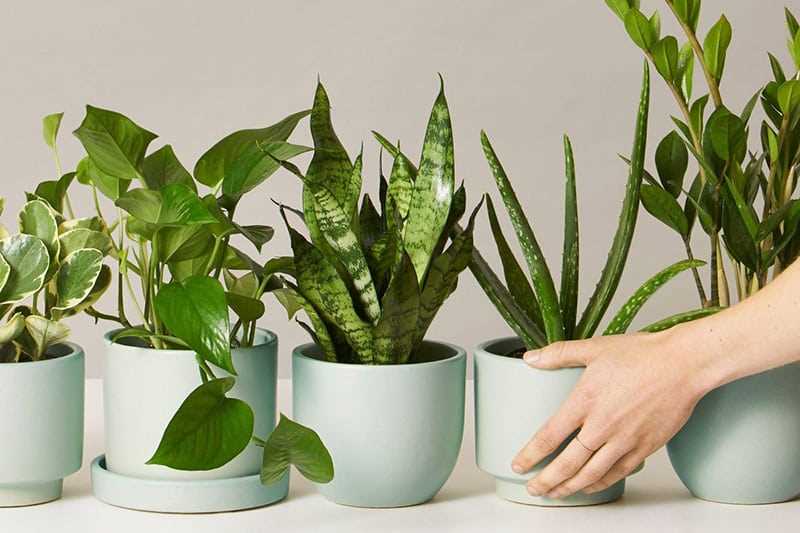
Bird of Paradise, also known as Strelitzia, is a tropical plant that is famous for its unique and striking flowers that resemble a bird in flight. The flowers are vivid orange and blue and can last for weeks. Bird of Paradise plants require bright light and high humidity to thrive. They are relatively easy to care for and can become a focal point in any room.
4. Bromeliads
Bromeliads are a diverse family of tropical plants that come in a wide range of colors, shapes, and sizes. They have bold and striking foliage and produce vibrant blooms that can last for several months. Bromeliads require bright light and moderate humidity. These plants are relatively easy to care for and can add a touch of tropical beauty to any indoor space.
5. Plumeria
Plumeria, also known as frangipani, is a tropical flowering plant that is known for its fragrant and showy flowers. The flowers come in various colors, including shades of white, yellow, pink, and red. Plumerias require bright, indirect light and high humidity. They are popular plants for tropical gardens and can be grown indoors as well.
These are just a few examples of the many beautiful tropical flowering plants that are available for indoor gardening. When choosing tropical plants, it’s important to consider their specific lighting and humidity requirements to ensure they thrive in your home. With the right care, these stunning plants can bring a touch of the tropics into your space and create a vibrant and colorful indoor oasis.
The Beauty of Orchids
Orchids are one of the most beautiful and sought-after indoor plants. They are known for their vibrant colors, unique shapes, and delicate blooms. Orchids come in a wide range of varieties and each one is truly exquisite.
Popular Orchid Varieties
There are many popular orchid varieties to choose from. Some of the most common ones include:
- Phalaenopsis Orchids: Also known as Moth Orchids, Phalaenopsis Orchids have large, waxy flowers that come in a variety of colors, including white, pink, and purple.
- Cattleya Orchids: Cattleya Orchids are known for their fragrant and showy flowers. They have large, ruffled petals and come in vibrant colors like fuchsia, orange, and yellow.
- Dendrobium Orchids: Dendrobium Orchids have clusters of delicate flowers that bloom along the length of their stems. They come in a wide range of colors, including white, purple, and pink.
- Oncidium Orchids: Oncidium Orchids, also known as Dancing Lady Orchids, have small, brightly colored flowers that resemble dancing ladies. They come in shades of yellow, orange, and red.
- Vanda Orchids: Vanda Orchids are known for their large and vibrant flowers. They come in a variety of shades, including blue, purple, and orange.
Taking Care of Orchids
While orchids may look delicate, they are relatively easy to care for. Here are some tips for taking care of your orchids:
- Light: Orchids prefer bright, indirect light. Avoid placing them in direct sunlight as it can scorch their leaves.
- Temperature: Orchids thrive in temperatures between 60 to 80 degrees Fahrenheit (15 to 27 degrees Celsius). Avoid exposing them to extreme temperature fluctuations.
- Watering: Orchids should be watered once a week, or when the top inch of their potting medium feels dry. Make sure not to overwater them as it can lead to root rot.
- Fertilizing: Use a balanced orchid fertilizer and apply it according to the instructions on the packaging. Fertilize your orchids every two weeks during their active growth period.
- Humidity: Orchids prefer high humidity levels. You can increase humidity around your orchids by placing a tray filled with water near them or using a humidifier.
The Elegance of Orchids
Orchids are not only beautiful, but they also symbolize love, luxury, and beauty. They make stunning decorations for any indoor space and can add a touch of elegance to your home or office.
The Fascinating World of Bonsai
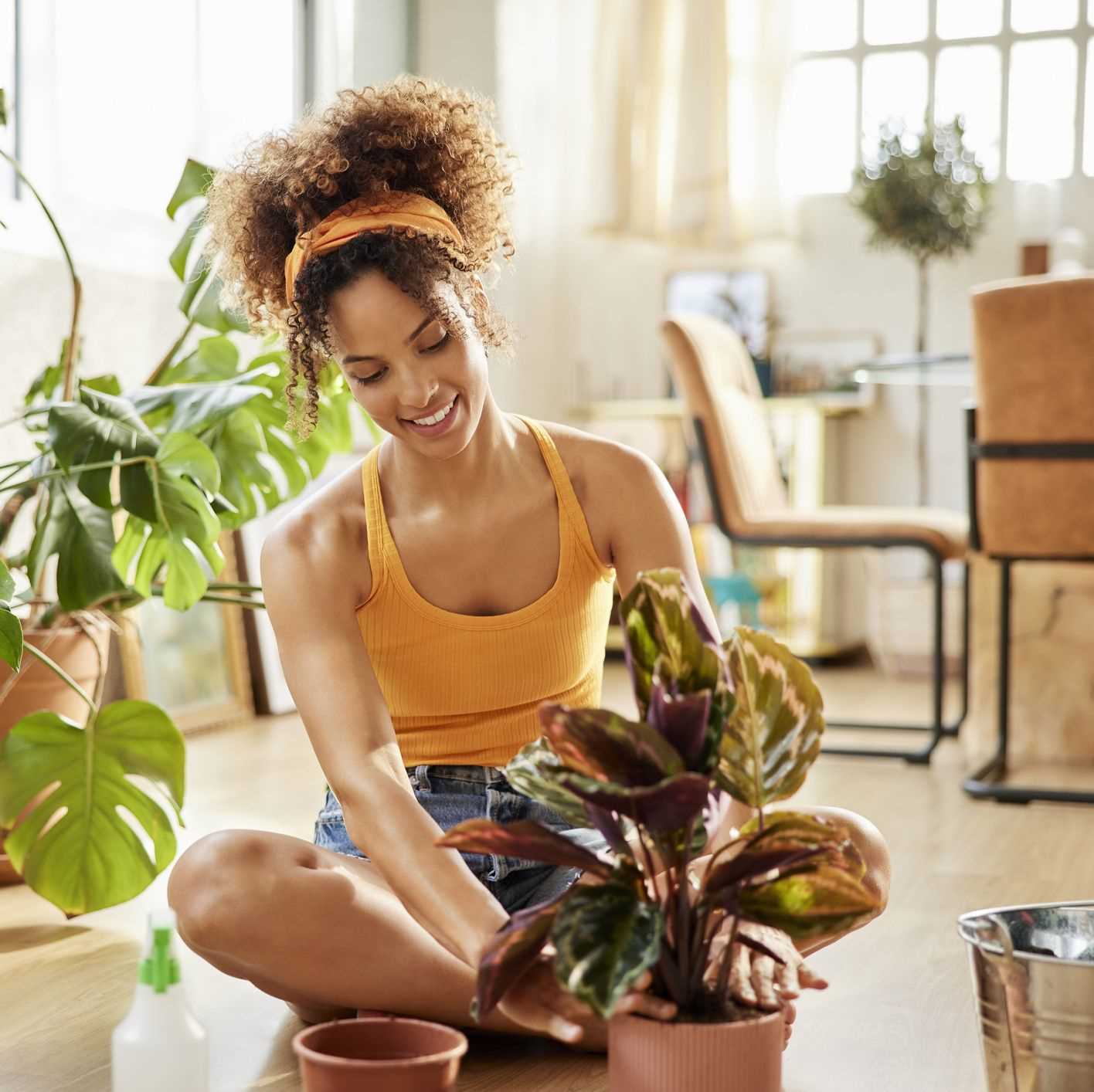
Bonsai is an ancient art form that originated in China and spread to Japan in the 6th century. It involves creating miniature trees that mimic the shape and scale of full-sized trees in nature. Bonsai trees are grown in containers and require constant care and attention to maintain their small size and unique shape.
History of Bonsai
The practice of growing bonsai trees can be traced back to over a thousand years ago in China, where miniature landscapes with trees and rocks were created in containers. These early forms of bonsai were called “penjing” and were used as decorative pieces in gardens and temples.
In Japan, the art of bonsai was further refined and developed. It became associated with Zen Buddhism and was seen as a meditative practice. Bonsai trees became a symbol of harmony between humans and nature, and the art form gained popularity among the Japanese elite.
Types of Bonsai
There are several different styles of bonsai, each with its own unique characteristics. Some of the most popular styles include:
Formal Upright: This style features a straight, upright trunk and well-balanced branches.
Informal Upright: The trunk of this style curves slightly, giving the tree a more dynamic appearance.
Cascade: In this style, the trunk of the bonsai cascades downwards, creating a flowing and dramatic effect.
Semi-Cascade: Similar to the cascade style, but with the trunk only partially cascading.
Care and Maintenance
Bonsai trees require specific care and maintenance to thrive. Some important aspects to consider include:
Watering: Bonsai trees should be watered regularly, but not excessively. The soil should be kept moist, but not soggy.
Pruning: Regular pruning is necessary to maintain the size and shape of the bonsai tree. Branches and roots should be trimmed as needed.
Fertilizing: Bonsai trees require regular fertilization to ensure they receive the necessary nutrients.
Positioning: Bonsai trees should be placed in a location that provides the optimal amount of light for their specific species.
The Art of Bonsai Today
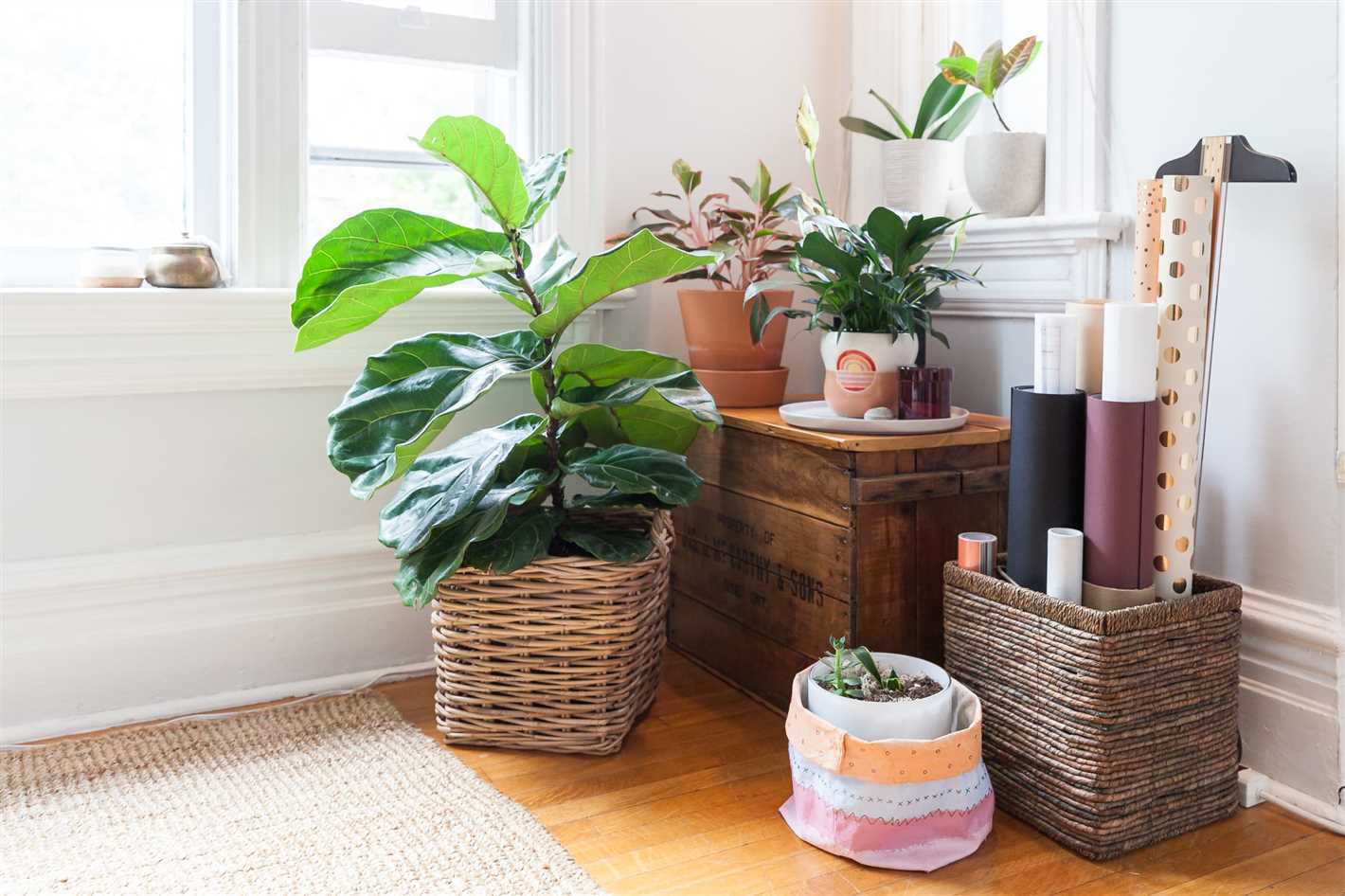
Bonsai continues to be a popular art form around the world. People are drawn to the beauty and tranquility of these miniature trees. Bonsai enthusiasts participate in workshops, exhibitions, and competitions to showcase their skills and learn from others.
Whether you’re a beginner or an experienced gardener, exploring the fascinating world of bonsai can be a rewarding and fulfilling journey.
Herbs for Indoor Gardening
Indoor gardening is a popular hobby for plant enthusiasts who want to bring the beauty of nature indoors. While there are many types of indoor plants to choose from, herbs are a great option for those who want to combine the joy of gardening with the practicality of having fresh herbs at hand. Here are some popular herbs that are well-suited for indoor gardening:
1. Basil

Basil is a versatile herb that is commonly used in many dishes, including pasta, salads, and sauces. It has a strong aroma and pairs well with tomatoes and garlic. Basil prefers bright, indirect light and moderate humidity, making it ideal for growing indoors.
2. Mint
Mint is a refreshing herb that is commonly used in teas, cocktails, and desserts. It has a cool, menthol flavor and adds a fresh twist to any recipe. Mint plants prefer bright, indirect light and consistently moist soil.
3. Rosemary
Rosemary is a fragrant herb that is often used in Mediterranean cuisine. It has needle-like leaves and a pine-like aroma. Rosemary plants prefer bright light and well-draining soil. They can be harvested by pinching off sprigs as needed.
4. Parsley
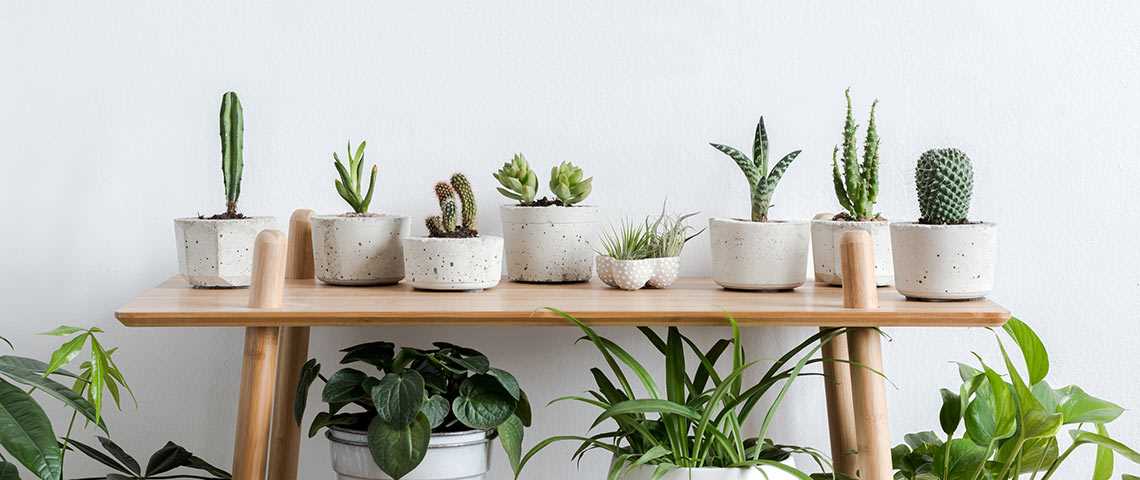
Parsley is a popular herb that is used as a garnish and flavor enhancer in many dishes. It has a fresh, grassy flavor and pairs well with meats, seafood, and vegetables. Parsley prefers bright, indirect light and regular watering.
5. Thyme
Thyme is a versatile herb that adds a savory flavor to a variety of dishes. It has small, aromatic leaves and pairs well with roasted meats, stews, and soups. Thyme plants prefer bright, indirect light and well-draining soil.
To grow herbs indoors, choose a location that receives adequate sunlight and has good air circulation. It’s important to provide the right amount of water and ensure proper drainage to prevent root rot. In addition, considering using organic potting soil and fertilizers to promote healthy growth. With the right care, you can enjoy a fresh supply of herbs right at your fingertips.
Exploring the Unique Air Plants
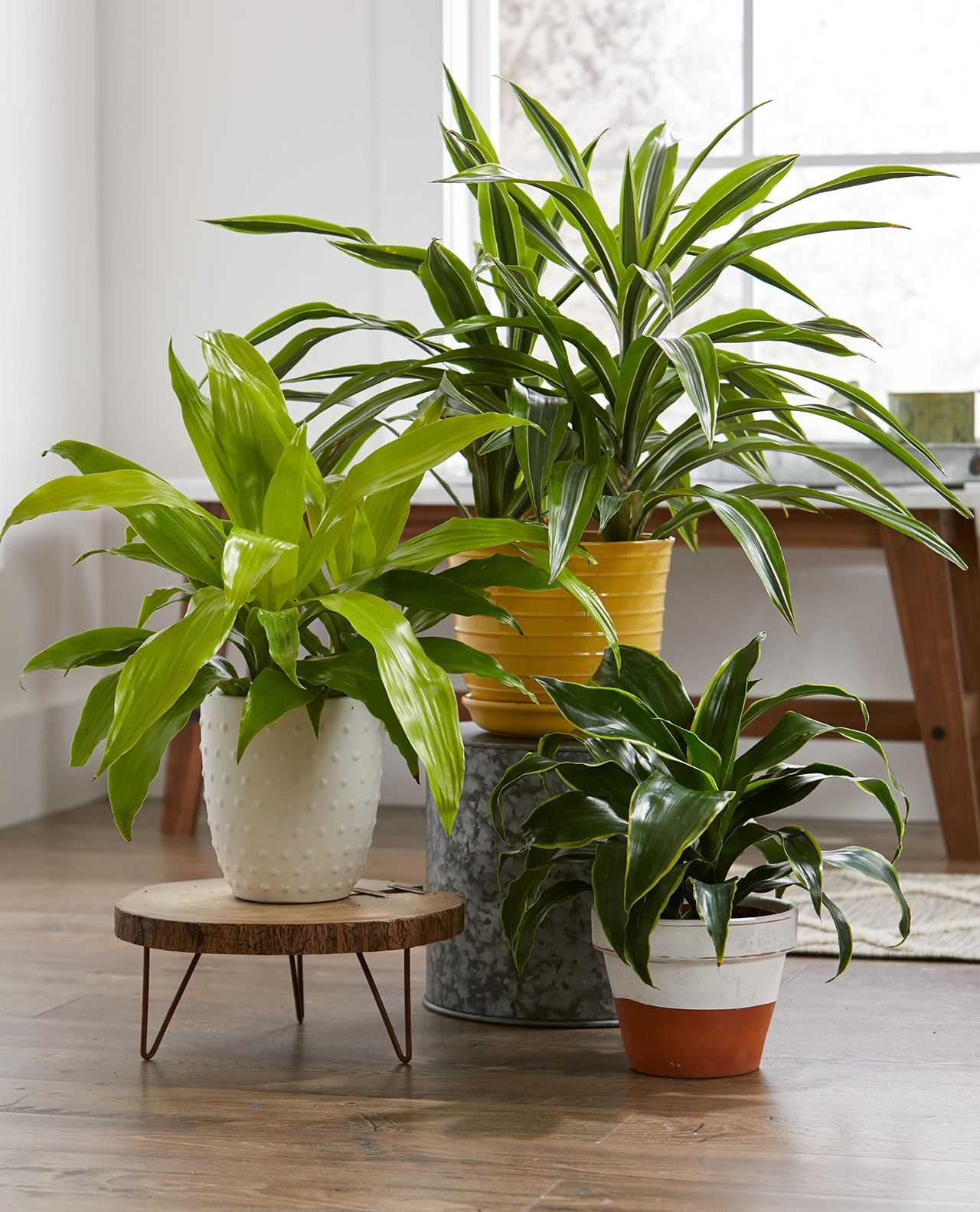
Introduction
Air plants, also known as Tillandsia, are a fascinating group of plants that don’t require soil to grow. They are epiphytes, which means they attach themselves to other plants or objects to get their nutrients. Air plants are native to forests, mountains, and deserts in South and Central America, the southern United States, and the West Indies.
Characteristics
- Air plants have unique structures that allow them to absorb moisture and nutrients from the air. They have specialized cells called trichomes that cover their leaves, which enable them to capture moisture and nutrients.
- Most air plants have long, strap-shaped leaves that can be gray, green, or silvery. Some species produce colored flowers that range from purple and pink to yellow and red.
- They come in a variety of shapes and sizes, from small and compact plants to larger, more dramatic species.
Care Tips
Air plants are relatively easy to care for, making them a popular choice for indoor gardening. Here are some tips to help you keep your air plants healthy:
- Light: Air plants thrive in bright, indirect light. Place them near a window or in a well-lit area.
- Water: Unlike traditional plants, air plants don’t need to be watered in soil. Instead, mist them with water two to three times a week or soak them in water for 20-30 minutes every one to two weeks. Allow them to dry completely before placing them back in their display.
- Air circulation: Air plants need good air circulation to prevent rot and encourage healthy growth. Make sure to provide adequate ventilation in the area where you keep them.
- Temperature: Air plants prefer temperatures between 50 and 90 degrees Fahrenheit. Avoid exposing them to extreme cold or heat.
- Fertilizer: While air plants can survive without fertilizer, you can use a diluted, water-soluble orchid or bromeliad fertilizer once a month to promote growth.
Displaying Air Plants
One of the best things about air plants is their versatility when it comes to displaying them. Here are a few ideas:
- Hang them in glass terrariums or orbs.
- Mount them on driftwood or decorative rocks.
- Place them in small pots or containers.
- Create a living wall by attaching air plants to a piece of wire or mesh.
In conclusion
Air plants are unique and beautiful additions to any indoor space. With their ability to survive without soil and their variety of shapes and sizes, they offer endless possibilities for creative displays. Follow the care tips mentioned above, and you will be able to enjoy the beauty of air plants for years to come.
Q&A:
What are some popular indoor plants that require low light?
Some popular indoor plants that require low light include snake plant, pothos, peace lily, and ZZ plant.
Can you suggest some flowering indoor plants?
Sure! Some flowering indoor plants that you may consider are African violets, orchids, anthuriums, and bromeliads.
What are some indoor plants that are safe for pets?
Some indoor plants that are safe for pets include spider plant, Boston fern, Christmas cactus, and parlour palm.
Are there any indoor plants that can improve indoor air quality?
Yes, there are several indoor plants that can improve indoor air quality. Some examples are snake plant, pothos, peace lily, and spider plant.
What are some trailing indoor plants that are good for hanging baskets?
Trailing indoor plants that are good for hanging baskets include pothos, string of pearls, string of hearts, and English ivy.
Are there any indoor plants that are suitable for beginners?
Absolutely! Some indoor plants that are suitable for beginners include snake plant, pothos, spider plant, and ZZ plant. These plants are low-maintenance and can tolerate a variety of conditions.
Video:
Lots of Foundation Plants for Corners – Part 3







